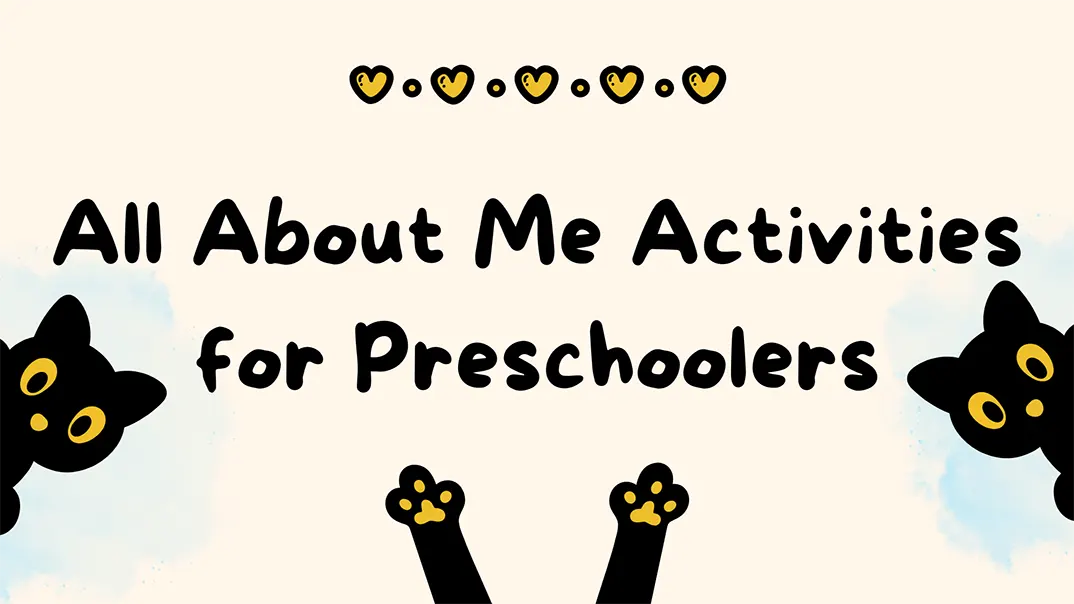How do you help preschoolers express who they are in a way that’s both meaningful and developmentally appropriate? How can young children learn to appreciate their uniqueness while also building connections with others? Many educators and parents struggle to find fun yet educational All About Me activities for preschoolers.
All About Me activities for preschoolers are simple and powerful exercises that encourage children to explore their identities, families, likes and dislikes, and feelings. These activities are not only fun and engaging but also play a key role in supporting social-emotional growth, language development, and classroom belonging. Whether through art, storytelling, or games, they provide a hands-on way for children to express themselves and learn about others.
In the sections that follow, we’ll introduce 30 creative and easy-to-implement All About Me activities for preschoolers. These ideas are perfect for teachers, caregivers, and parents who want to build self-confidence and foster meaningful classroom interactions. Let’s dive into the world of self-discovery and see how these playful activities can make a lasting impact on young learners.
What Are the Benefits of All About Me Activities for Preschoolers?
Introducing all about me activities for preschoolers isn’t just a classroom trend—it’s a meaningful way to support early childhood development in a playful, personalized manner. These activities offer a wealth of emotional, cognitive, and social benefits that help children begin to understand themselves and the world around them.
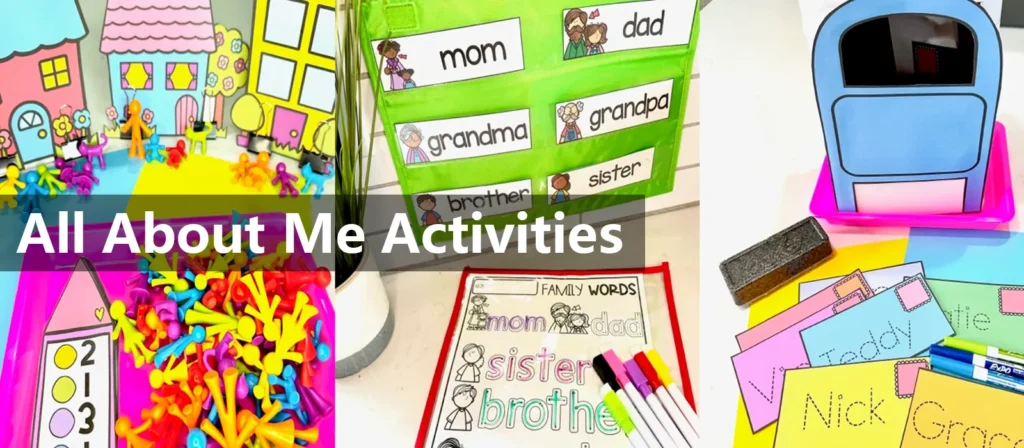
- Fosters Self-Awareness and Identity
At the heart of these activities is the opportunity for preschoolers to reflect on who they are. Whether it’s drawing a self-portrait, sharing their favorite color, or talking about their families, children begin to understand their likes, dislikes, and unique traits. This early self-awareness lays the groundwork for building a strong, positive identity as they grow. - Encourages Language Development
When children talk about themselves, they naturally expand their vocabulary. Describing their hair color, family members, or favorite foods helps them learn new words in a context that’s meaningful to them. These conversations also enhance listening skills, especially when peers share their own stories. - Builds Social and Emotional Skills
All about me activities often take place in group settings, which is perfect for developing social skills. Preschoolers learn to take turns, listen to others, and appreciate differences among their peers. These interactions foster empathy and help build emotional intelligence, essential traits for navigating future social settings. - Promotes Confidence and Self-Esteem
When children see that their thoughts, feelings, and identities are valued, their self-confidence soars. Completing a project about themselves, then sharing it with a teacher or class, reinforces the idea that they are important and capable. This boost in self-esteem contributes to a more positive attitude toward learning and life in general. - Supports Early Literacy and Fine Motor Skills
Many all about me preschool activities include elements of writing, drawing, or coloring. These tasks help develop fine motor control while also offering a foundation for early literacy. For instance, writing their name or labeling parts of the body introduces them to basic literacy concepts in a fun and pressure-free way. - Encourages Family Involvement
Some of the most meaningful activities invite participation from home. Creating family trees, gathering photos, or discussing family traditions allows parents to get involved in their child’s learning. This not only strengthens the school-home connection but also makes the learning experience richer and more relatable. - Enhances Cultural Awareness and Diversity Appreciation
By encouraging children to share details about their family background, traditions, or languages spoken at home, all about me activities help create a culturally responsive learning environment. Preschoolers begin to see diversity as something to celebrate, which sets the tone for inclusivity and respect throughout their education.
Planning All About Me Preschool Activities
Creating meaningful All About Me activities for preschoolers starts with thoughtful planning that takes into account their developmental stage, learning styles, and emotional needs. To make these experiences impactful and engaging, educators and caregivers need a flexible framework that blends fun with foundational learning.
1. Set Clear Objectives
Before choosing specific All About Me activities for preschoolers, it’s essential to define what you want the children to gain. Are you focusing on helping them identify their emotions? Encouraging them to express personal preferences? Or promoting social connections? Clear goals guide the selection of age-appropriate and purposeful tasks that support early learning outcomes.
2. Consider the Timing
The best time to introduce All About Me activities for preschoolers is at the beginning of the school year or when welcoming new students. These activities help ease transitions, create a sense of belonging, and offer teachers valuable insight into each child’s personality and background.
3. Know Your Children
Every preschool group is unique. Consider the children’s ages, interests, cultural backgrounds, and developmental needs. Some children may be more verbal, while others prefer visual or kinesthetic learning. Tailor activities to reflect the diversity and abilities within your group, ensuring that each child can participate meaningfully.
4. Create a Welcoming Environment
All about me preschool activities are deeply personal. Set up a classroom environment that feels safe and nurturing. Use visual aids, storybooks, or calming music to introduce themes about identity and self-awareness. The more comfortable children feel, the more likely they are to share and engage authentically.
5. Incorporate a Variety of Modalities
Balance the week’s plans with a mix of activities—art, music, storytelling, dramatic play, movement, and sensory exploration. For instance, while one child may enjoy creating a self-portrait with crayons, another might thrive in a group song that names body parts or personal traits. Variety keeps the experience dynamic and inclusive.
6. Integrate Across the Curriculum
All about me themes can connect with multiple learning areas. For example, math activities can involve counting family members or measuring height. Literacy tasks might include writing names or labeling drawings. Science lessons could explore skin tones, eye colors, or senses. This cross-curricular approach enriches the learning experience and reinforces concepts in context.
7. Use Visuals and Hands-On Materials
Preschoolers are visual and tactile learners. Use mirrors, photo collages, name cards, and craft supplies to make abstract concepts tangible. Hands-on materials like story stones, puppets, and personalized worksheets help children make connections and stay engaged throughout the All About Me activity.
8. Make It Inclusive
Children come from diverse backgrounds, be mindful of cultural diversity, family structures, and language differences when designing your activities. Avoid assumptions about family structures or traditions. Offer open-ended prompts and provide options so that every child feels seen and valued.
9. Plan for Flexibility and Spontaneity
While structure is essential, leave room for exploration and child-led interests. If a child wants to draw their pet instead of their family, let them! These moments often lead to deeper engagement and insights. Follow the children’s curiosity and use it as a bridge to the core learning objectives.
10. Prepare for Emotional Responses
Exploring identity can stir emotions, especially when discussing family or home life. Be sensitive to each child’s situation and ready to offer support or redirection as needed. Having quiet spaces or alternative activities available ensures every child feels secure and respected during the process.
11. Document and Reflect
Keep track of each child’s participation and progress. Take photos, create portfolios, or jot down notes about what children shared or how they responded. This documentation not only supports assessment but also helps parents and caregivers appreciate their child’s growth and individuality.
30 Fun All About Me Activities for Preschoolers
All About Me preschool activities are a wonderful way to help young children explore their identity, express their interests, and connect with others. From discovering what makes them unique to learning about their families, emotions, and daily routines, these hands-on experiences encourage self-awareness, language development, and social-emotional growth. In this section, you’ll find 30 fun and meaningful All About Me preschool activities that are perfect for classe préscolaires or at-home learning, designed to engage young minds while celebrating every child’s individuality.
1. All About Me Poster
Creating an “All About Me” poster is a fun and expressive way for preschoolers to introduce themselves to their classmates. Each child makes a poster that includes their name, age, favorite color, favorite food, and a drawing of themselves. This activity is often used at the beginning of the school year to help children feel recognized and valued. It also offers an opportunity to engage families by encouraging them to discuss the poster content with their child at home.
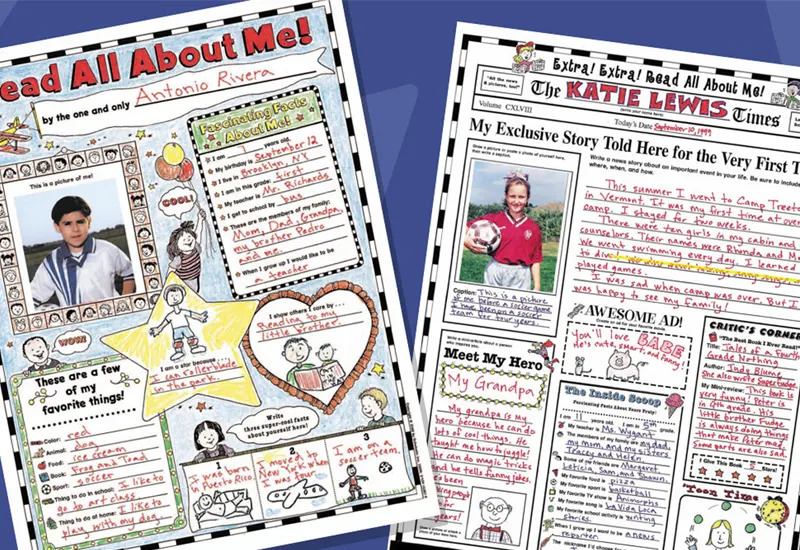
Matériel nécessaire :
- Grand papier de construction ou papier cartonné
- Crayons, markers, colored pencils
- Glue and child-safe scissors
- Stickers or magazine cutouts (optional)
- “All About Me” template (optional)
Mesures:
- Give each child a blank poster or template.
- Ask them to draw or write their name, age, and favorite things.
- Encourage them to decorate the poster with colors, images, or stickers.
- Assist them in writing or dictating sentences about themselves.
- Display the posters in the classroom or let children share during circle time.
Valeur éducative :
This All About Me activity supports social-emotional development by giving children space to express their individuality. It helps foster confidence and a sense of ownership within the classroom environment. By sharing their posters with peers, children build early communication skills and start to understand that everyone has unique interests and experiences. Teachers also gain helpful insights into each child’s preferences and background.
2. My Family Portrait
In this activity, children draw or paint a picture of their family. It can include parents, siblings, grandparents, pets, or anyone they consider family. This project helps children make connections between home and school while honoring the people who are important in their lives. It’s also a great conversation starter that allows children to describe their family dynamic in their own words.
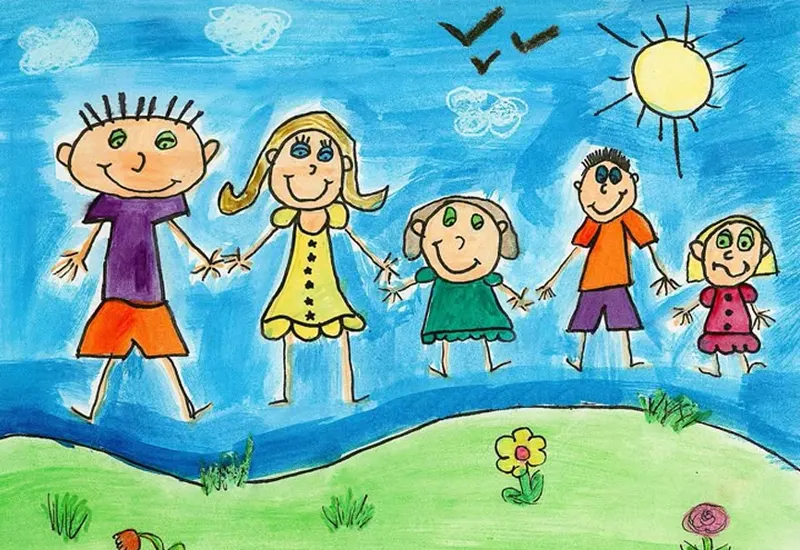
Matériel nécessaire :
- Pencils for outlining
- White paper or canvas sheets
- Crayons, markers, or watercolor paint
- Optional: glue, yarn, googly eyes for decoration
Mesures:
- Invite children to think about who is in their family.
- Provide them with materials to draw or paint their family members.
- Encourage them to include details (e.g., names, pets, where people live).
- Ask each child to describe their drawing to the class or teacher.
- Display the artwork on a “Family Wall” in the classroom.
Valeur éducative :
This All About Me activity enhances children’s sense of identity and emotional security by validating their family experiences. It promotes pride in one’s background and builds empathy as children see the diversity in their classmates’ family structures. It also fosters développement de la motricité fine and encourages descriptive language as children talk about their drawings and relationships.
3. Mirror Self-Portraits
Using mirrors, children observe their own facial features and create self-portraits. They focus on details like eye color, hair shape, and facial expressions, encouraging body awareness and observation. This All About Me activity helps preschoolers recognize and appreciate their appearance, fostering both confidence and early artistic skills. It’s a great exercise for building self-recognition and attention to detail.
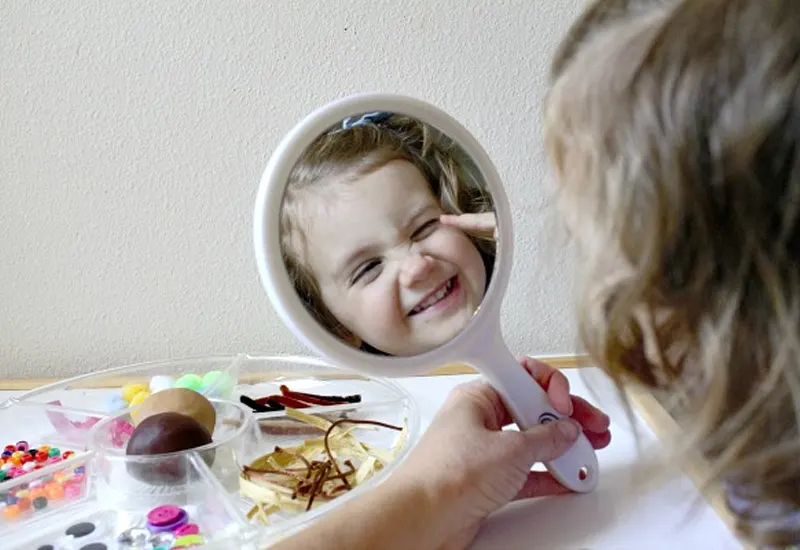
Matériel nécessaire :
- Small child-safe mirrors
- Drawing paper or cardstock
- Crayons, markers, or colored pencils
- Optional: multicultural skin tone crayons
Mesures:
- Give each child a mirror to look at their face.
- Ask them to observe their eyes, nose, mouth, and hair.
- Provide drawing materials and ask them to draw what they see.
- Encourage them to add color and small details to personalize the portrait.
- Display the portraits or create a “Who’s Who?” gallery.
Valeur éducative :
This activity supports body and facial recognition, which is a foundational skill in early childhood development. It also promotes acceptance of physical differences and encourages children to take pride in their uniqueness. On a cognitive level, it develops visual perception and fine motor skills. Socially, seeing classmates’ portraits can lead to discussions about diversity and appearance.
4. My Favorite Things Collage
This creative collage allows children to express their interests through images. They select pictures that represent their favorite foods, animals, toys, or colors from magazines or printed sheets. By gluing these onto a large paper, children build a visual summary of what they enjoy. It’s a tactile, open-ended project that offers rich opportunities for storytelling and sharing.
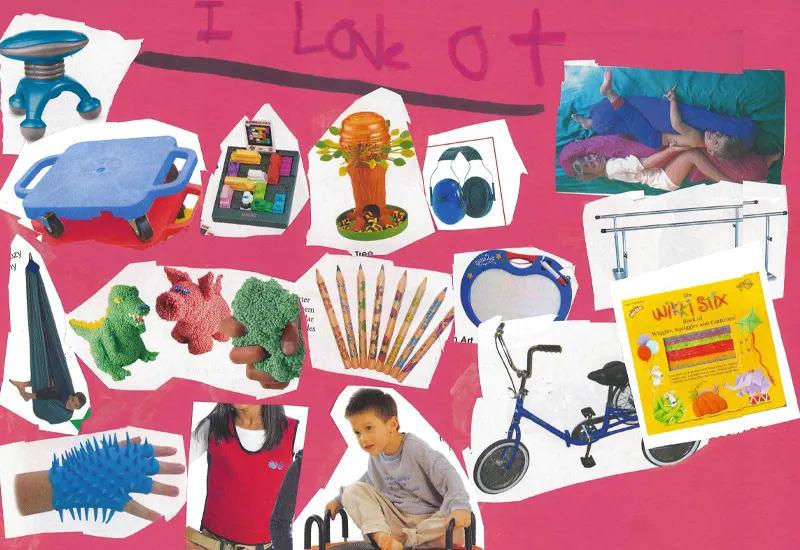
Matériel nécessaire :
- Crayons and markers for labeling
- Magazines or printed images
- Glue sticks and scissors
- Large paper or poster board
Mesures:
- Give each child a large paper and go through a selection of images.
- Ask them to pick pictures of things they love.
- Help them cut out and glue the images onto their collage sheet.
- Encourage them to decorate and label the pictures.
- Let each child explain their collage to the group or teacher.
Valeur éducative :
This All About Me activity encourages expressive language and reinforces the concept of personal preferences. It helps preschoolers organize and categorize information visually, supporting early literacy and critical thinking. Additionally, sharing their collages builds confidence and encourages listening and empathy among peers.
5. Decorate My Name
Names are deeply personal, and learning to recognize, spell, and decorate one’s own name is both exciting and empowering for preschoolers. In this activity, children create a name card and personalize it with art materials. Along the way, teachers can explore the origin or meaning of names, how to write them, and celebrate each child’s identity.

Matériel nécessaire :
- Name cards printed or written in a large font
- Glue, sequins, beads, or buttons
- Crayons, markers, colored paper
- Letter stamps or alphabet stickers (optional)
Mesures:
- Provide each child with a printed or outlined version of their name.
- Let them trace the letters with crayons or decorate them with craft materials.
- Use stamps or stickers to reinforce letter recognition.
- Talk about how their name is special and pronounce it clearly.
- Display the names on cubbies, desks, or walls.
Valeur éducative :
This activity promotes early literacy by helping children recognize and spell their names. It also supports fine motor development through tracing and decorating. On a social-emotional level, it affirms each child’s identity and fosters a sense of belonging. Discussing names also opens the door to cultural appreciation and language diversity in the classroom.
Envoyez-nous un message si vous avez des questions ou si vous souhaitez obtenir un devis. Nos experts vous répondront dans les 48 heures et vous aideront à sélectionner le produit qui vous convient.
6. My Handprint Identity
In this sensory-rich activity, children trace or stamp their handprints onto paper and decorate them with symbols that represent who they are. Each finger can symbolize something different, like a favorite color, animal, or hobby. This project provides a personal and literal “imprint” of each child while sparking self-reflection and fine motor engagement.
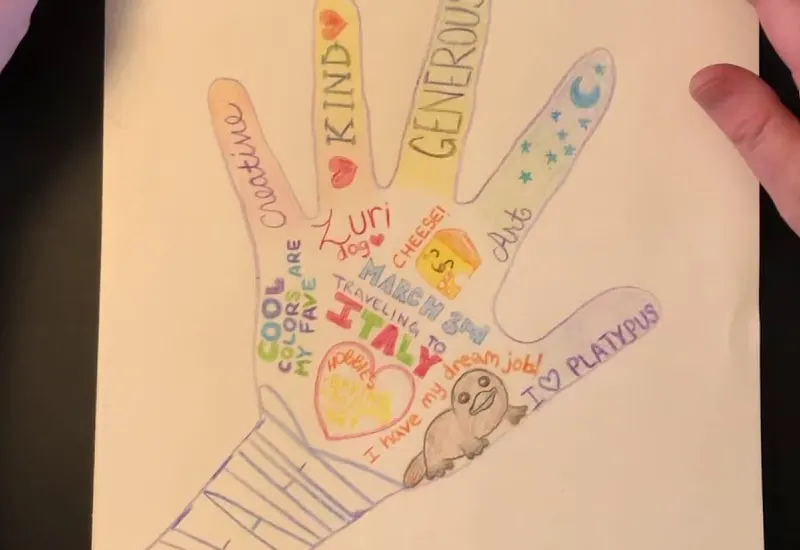
Matériel nécessaire :
- Wet wipes or access to a sink
- White paper or cardstock
- Non-toxic paint or ink pads
- Crayons, markers, or stickers
Mesures:
- Help children trace or stamp their handprint on a sheet of paper.
- Ask them to decorate each finger with something that represents them.
- Use crayons, markers, or stickers to add personal touches.
- Write the child’s name and a short description at the bottom.
- Display handprints in the classroom or create a “Helping Hands” wall.
Valeur éducative :
This activity builds fine motor skills while supporting identity development. It encourages symbolic thinking by helping children connect abstract ideas (like preferences or emotions) to physical representations. It’s also an inclusive way to celebrate each child’s individuality and explore the concept of uniqueness in a visual, hands-on format.
7. My Bag Show and Tell
Each child fills a small bag with 3–5 items from home that represent something about them, such as a favorite toy, a family photo, or a small item related to a hobby. During circle time, they present their bag and explain why each item is special. This is a great way to build language skills and peer relationships.
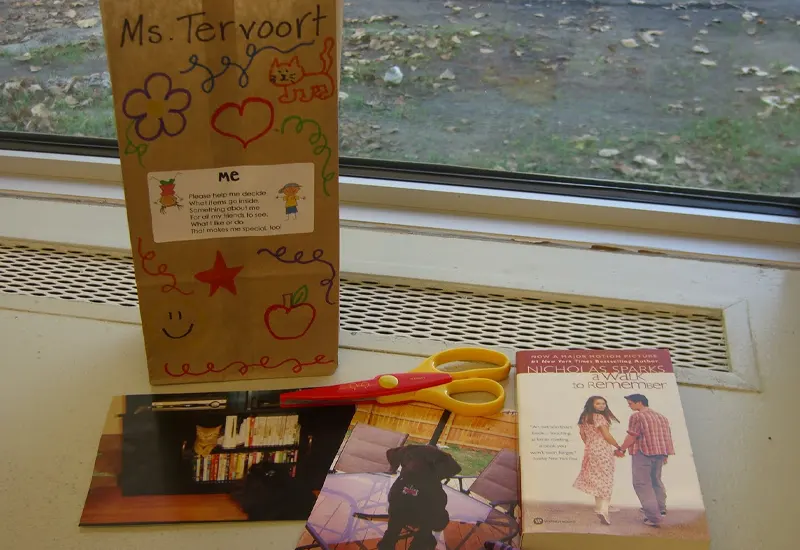
Matériel nécessaire :
- Small paper or cloth bags (one per child)
- Note to parents explaining the activity
- Optional: label tags for each item
Mesures:
- Send bags home with a note asking families to help fill them.
- Allow each child to present their bag during group time.
- Encourage them to explain each item and its meaning.
- Ask classmates to ask one friendly question after each share.
- Keep the activity ongoing over several days to give everyone a turn.
Valeur éducative :
This activity fosters communication, storytelling, and listening skills. It also supports social-emotional development by encouraging children to share personal stories in a safe and respectful environment. Teachers gain a deeper understanding of their students, and children feel seen, heard, and valued by their peers.
8. Feelings Face Chart
Using a blank face template, children draw their current facial expression and label it with an emotion. Over time, you can repeat the activity to create a personal “feelings chart” showing different emotional states. It’s a powerful way to help young children recognize and name their emotions while fostering emotional regulation.
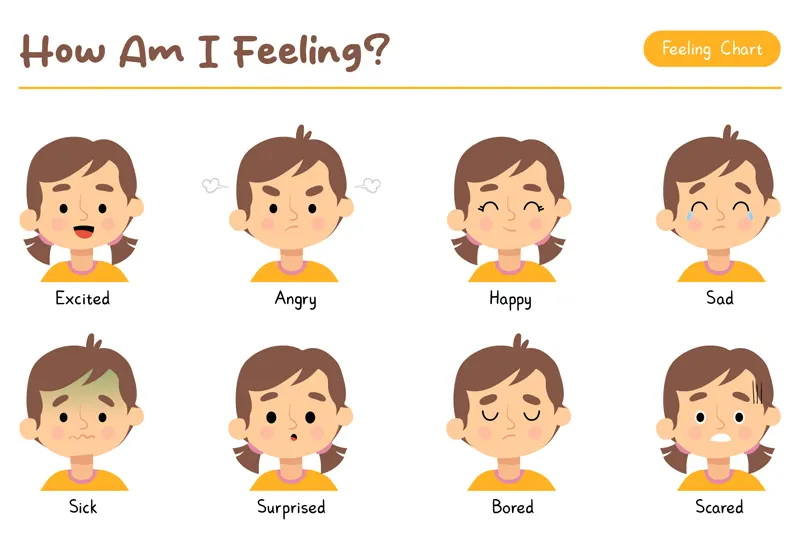
Matériel nécessaire :
- Blank face templates
- Crayons, markers, or pencils
- Emotion word cards or posters
- Mirrors (optional for expression observation)
Mesures:
- Provide children with a blank face outline.
- Ask them to draw how they feel today using facial features.
- Offer emotion words to help label their drawing.
- Repeat weekly or daily to build a “Feelings Book” or chart.
- Use the chart to support emotional check-ins during class.
Valeur éducative :
This activity helps develop emotional literacy by providing children with tools to express their feelings both visually and verbally. Recognizing and naming emotions is essential for social development and self-regulation. It also promotes empathy, as children begin to understand that others experience different emotions at various times.
9. My Favorite Food Craft Plate
Children design a paper plate filled with their favorite foods using cut-outs, drawings, or 3D elements. They talk about why they like those foods and share stories of family meals or cultural dishes. This activity connects identity with culture, home life, and personal tastes.
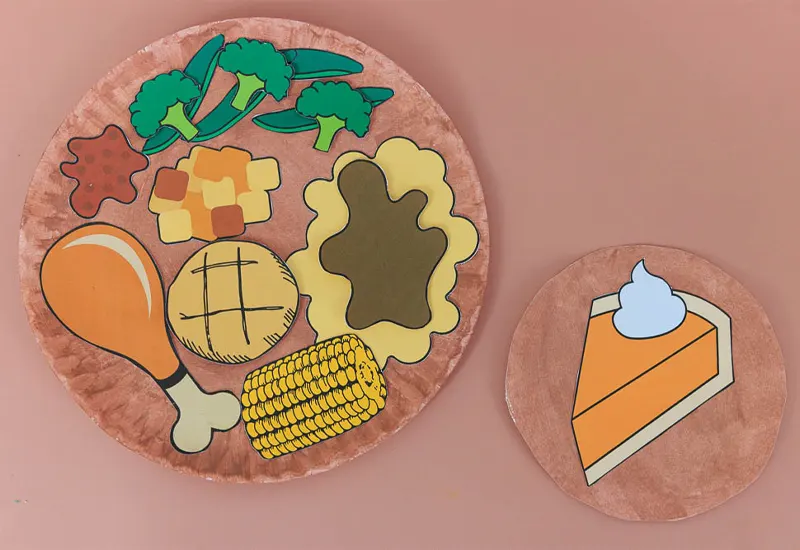
Matériel nécessaire :
- Assiettes en carton
- Colored paper, glue, scissors
- Marqueurs ou crayons
- Printed images of food (optional)
Mesures:
- Give each child a paper plate as their base.
- Help them draw or glue images of their favorite foods.
- Add labels or short sentences with adult assistance.
- Invite children to share their plates with the class.
- Use plates to spark a discussion about food diversity.
Valeur éducative :
This activity supports cultural awareness, vocabulary building, and expressive communication. It helps children reflect on their own preferences while introducing them to others’ food traditions. Teachers can use this as a starting point for lessons on nutrition, culture, and mealtime routines.
10. My “All About Me” Crown
In this creative activity, children design and wear their very own “All About Me” crown. Each section of the crown features something special about them, such as their name, age, favorite food, favorite color, and one thing they’re good at. Wearing the crown throughout the day allows them to proudly showcase who they are to their classmates in a fun and festive way.
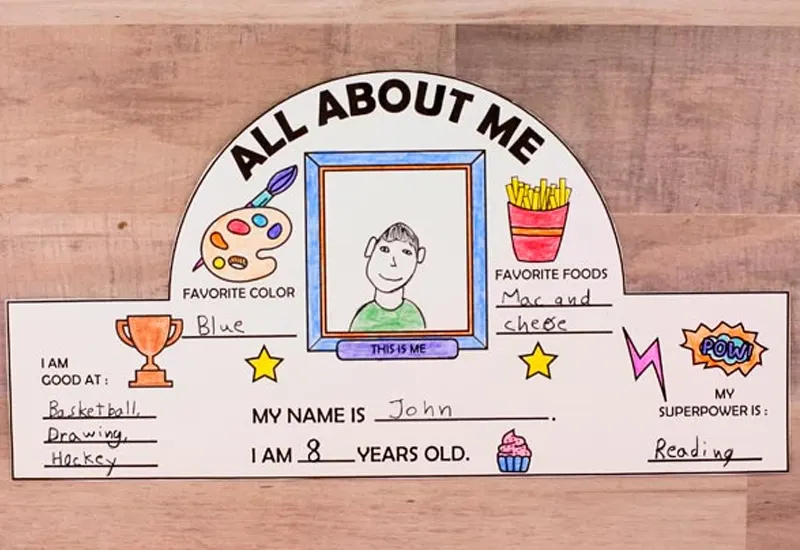
Matériel nécessaire :
- Safety scissors
- Construction paper or sentence strips
- Glue, tape, or a stapler
- Crayons, markers, stickers
- Pre-drawn crown templates (optional)
Mesures:
- Cut out long strips of paper to fit each child’s head.
- Help them divide the strip into 4–5 sections with light pencil lines.
- In each section, children draw or write about a part of themselves.
- Let them decorate their crown with stickers, gems, or drawings.
- Fit the strip around their head and staple or tape it into a crown.
Valeur éducative :
This activity encourages self-expression and helps children identify key aspects of their identity. It promotes fine motor skills through drawing and assembling, and supports language development as children explain their choices. Wearing the crown also boosts self-confidence and encourages social interaction as classmates learn about one another in a joyful, celebratory way.
11. “Who Am I?” Guessing Game
This interactive game encourages children to share personal facts and guess who their classmates are based on clues. It sparks curiosity, active listening, and appreciation of differences. It’s also a fun way for kids to build connections and learn more about one another.
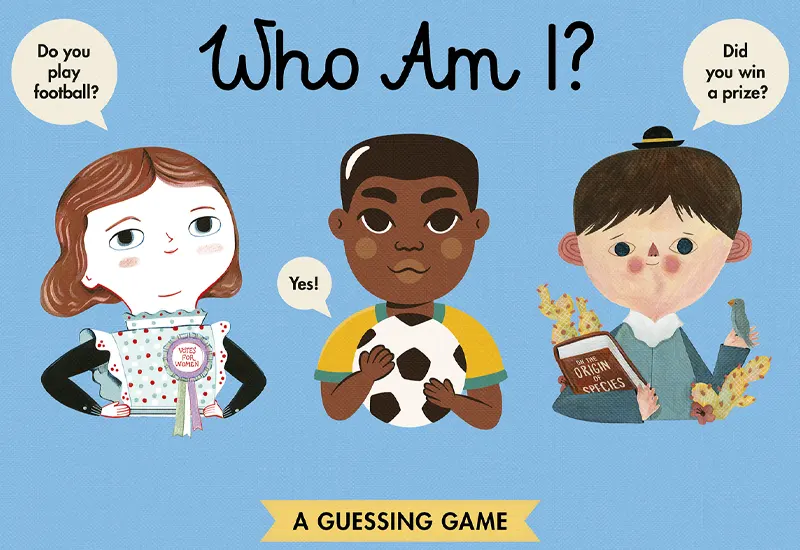
Matériel nécessaire :
- Index cards or printable clue sheets
- Pencils or markers
- Optional: photos of children
Mesures:
- Ask each child to draw or describe 2–3 things about themselves on a card (e.g., “I have a dog,” “I like strawberries”).
- Read the clues aloud to the group.
- Let the group guess who it is based on the facts.
- Reveal the child and allow them to share more if they wish.
- Repeat until all children have had a turn.
Valeur éducative :
This game improves listening comprehension and social awareness. It gives children a safe platform to talk about themselves while teaching them to respect and understand their peers. It also reinforces memory, vocabulary, and public speaking skills in a playful, supportive setting.
12. My Birthday Timeline
Children create a timeline to show how they’ve grown since birth. They can include drawings or photos from different ages and milestones, such as first words, first steps, or favorite toys at different times. This personal timeline offers children a visual way to understand the concept of time and self-growth.

Matériel nécessaire :
- Glue, crayons, markers
- Long paper or poster board
- Ruler and pencil for layout
- Printed photos or children’s drawings
Mesures:
- Help children draw a timeline with key age markers (birth, age 1, 2, 3, etc.).
- Let them add photos or draw themselves at each stage.
- Encourage them to include a memory or favorite item for each year.
- Label each section with adult help as needed.
- Present timelines in class or hang them on the walls.
Valeur éducative :
This activity introduces the concept of time, sequencing, and personal history in a meaningful way. It helps preschoolers reflect on their development and celebrate how far they’ve come. It also encourages storytelling and parent-child collaboration when photos and memories are gathered from home.
13. All About Me Booklet
This is a classic multi-page booklet that preschoolers complete over several days. Each page prompts children to share something about themselves, like their name, age, favorite color, number of family members, and what they want to be when they grow up. It becomes a keepsake that parents treasure and children love reading.
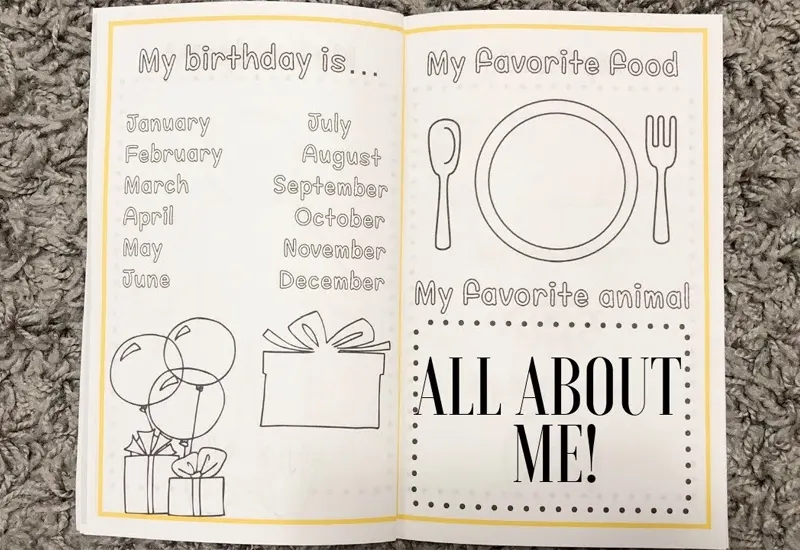
Matériel nécessaire :
- Pre-made “All About Me” printable booklets
- Crayons, marqueurs
- Stapler
- Optional: photos or mirrors
Mesures:
- Print or assemble mini-booklets (5–6 pages each).
- Introduce one page each day (e.g., “My Name,” “My Family,” etc.).
- Allow time for children to draw, trace, or dictate answers.
- After all pages are complete, staple them into a book.
- Share during circle time or send home as a family keepsake.
Valeur éducative :
This supports early literacy, sequencing, and self-awareness. It gives structure to personal expression and can be adapted for various skill levels. Children also develop ownership over their work, and teachers gain insight into each child’s background.—an important step in developing empathy and self-regulation.
14. My Home Drawing
Children draw a picture of their home and the people or pets who live with them. This activity fosters connections between home and school and celebrates each child’s unique living situation. Children can include favorite spaces, toys, or routines in their illustration.
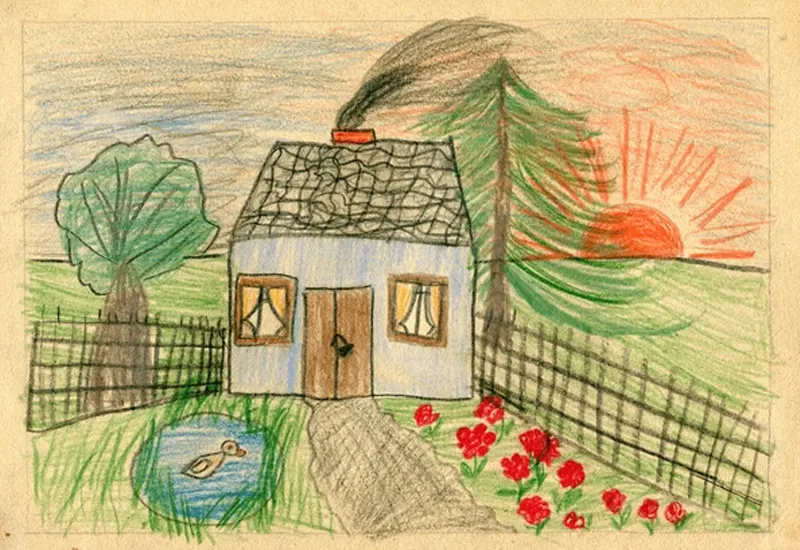
Matériel nécessaire :
- Drawing paper
- Crayons, markers, or watercolor
- Optional: family photo for reference
Mesures:
- Ask children to think about what their home looks like.
- Provide materials for them to draw their house and household members.
- Encourage them to include details like rooms, pets, or favorite places.
- Let them describe their home to a peer or the class.
- Use drawings in a “Where We Live” classroom display.
Valeur éducative :
This activity promotes identity and belonging by honoring each child’s home life. It helps build vocabulary and descriptive language while reinforcing observation and memory. It’s also an inclusive way to recognize family diversity and living arrangements without judgment.
15. My Body Parts Labeling Activity
Children trace a life-sized outline of themselves (or use a template) and label basic body parts. They can add clothing, accessories, or fun facts (e.g., “I can jump!” or “My eyes are brown”). This activity builds self-awareness and early science concepts while allowing for playful creativity.
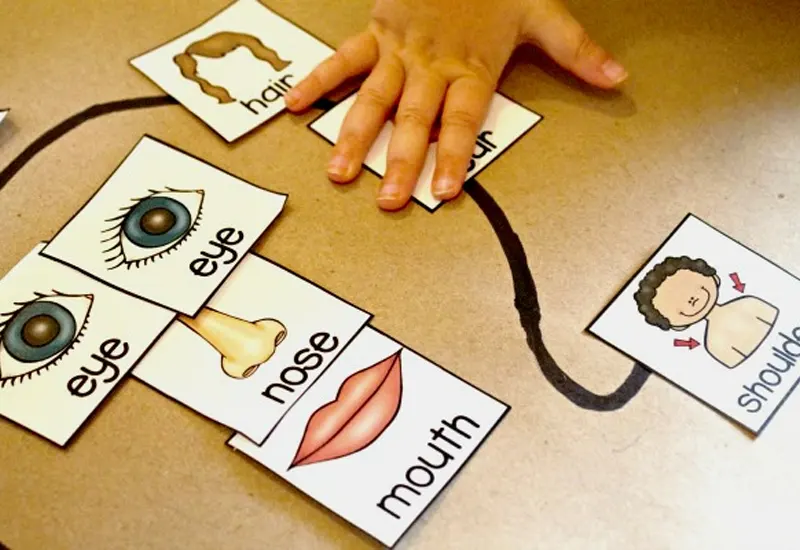
Matériel nécessaire :
- Large butcher paper or body outline templates
- Crayons, pencils, markers
- Label cards (head, arms, legs, etc.)
- Tape for wall display
Mesures:
- Trace each child’s body on a large sheet of paper.
- Let them draw and color in features, clothes, or items.
- Use pre-written labels or help them write body part names.
- Encourage kids to share what their bodies can do.
- Display labeled outlines on classroom walls.
Valeur éducative :
This activity integrates science, literacy, and self-concept. It helps children learn the names and functions of body parts while fostering pride in their physical selves. It’s also an ideal introduction to body safety and personal boundaries in a developmentally appropriate way.
16. My Likes and Dislikes Chart
Description:
In this reflective activity, children create a simple chart that shows things they like on one side and things they don’t like on the other. They can draw, write, or glue images to express their preferences. This is an excellent opportunity for self-awareness, discussion, and discovering shared interests with classmates.
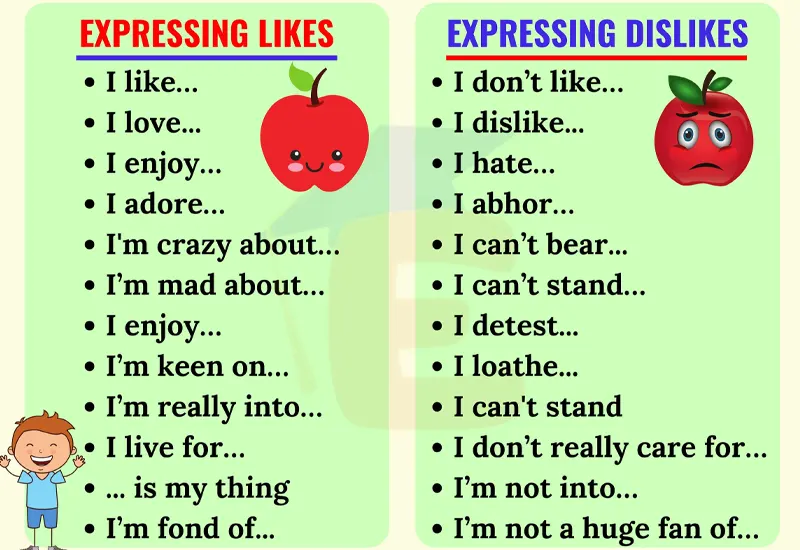
Matériel nécessaire :
- Paper divided into two columns: “I Like” and “I Don’t Like”
- Crayons, markers, glue
- Magazines or printed picture cutouts
- Ciseaux
Mesures:
- Hand out the two-column chart to each child.
- Let them draw or paste images of things they like and don’t like.
- Encourage discussion about their choices.
- Allow them to share their charts with the group or a partner.
- Display completed charts on a bulletin board titled “We’re All Different!”
Valeur éducative :
This activity promotes emotional literacy and decision-making. It helps children express their opinions and understand that it’s okay to like different things. It also encourages comparison and contrast skills—an early cognitive function important in language and math development.
17. My Hobbies Picture Book
Children create a mini-book about their hobbies and favorite pastimes. Each page can feature one activity they love—such as playing soccer, painting, building with blocks, or reading. Drawing and writing (with help) about these experiences allows children to reflect on what brings them joy and pride.
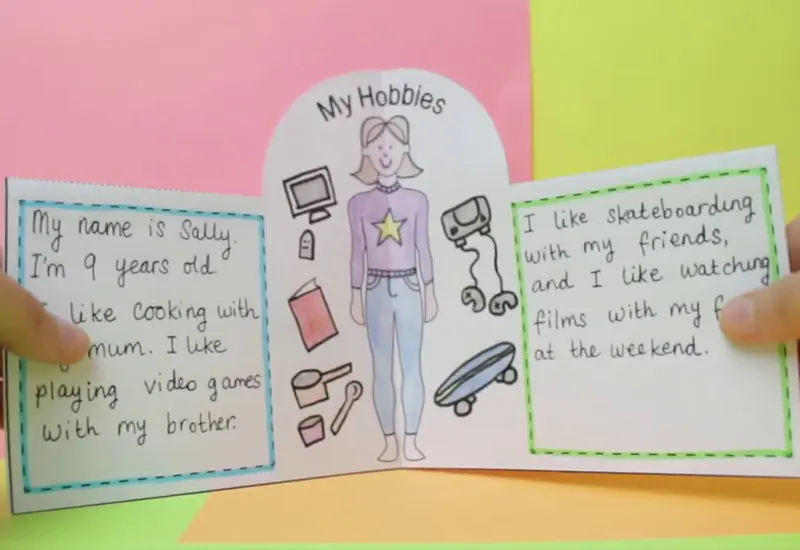
Matériel nécessaire :
- Mini booklets (folded paper or stapled pages)
- Crayons, pencils, or markers
- Autocollants (facultatif)
- A sample to model
Mesures:
- Give each child a blank booklet with space for 4–6 pages.
- Ask them to draw a different hobby on each page.
- Help them label or dictate what the hobby is.
- Let them decorate the pages creatively.
- Invite them to read their books aloud or to a partner.
Valeur éducative :
This activity supports expressive language, sequencing, and self-identity. It empowers children to take ownership of what makes them happy and helps peers learn about one another’s interests. It also provides an opportunity for teachers to observe patterns in play and learning preferences.
18. My Special Talent Show
Each child gets a chance to show a special talent in front of the class—like singing a song, showing a dance move, building with blocks, or naming colors. This low-pressure “talent show” celebrates individuality and gives every child a moment to shine.
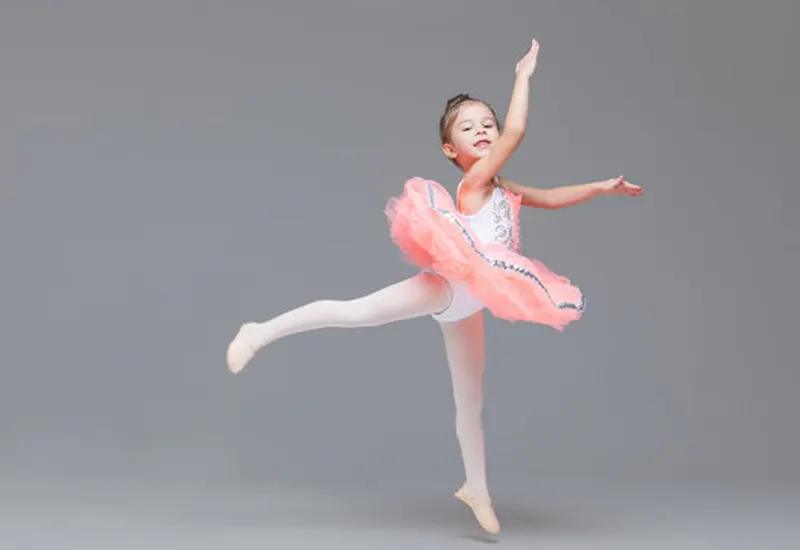
Matériel nécessaire :
- Open space in the classroom
- Optional: microphone prop or spotlight
- List of simple talent ideas for inspiration
- Encouragement chart or sticker rewards
Mesures:
- Schedule a time for each child to share a small talent.
- Encourage them to prepare something simple they enjoy doing.
- Introduce each child and let them take center stage.
- Clap and cheer for everyone equally.
- Give a participation sticker or certificate.
Valeur éducative :
This activity builds confidence, public speaking, and performance readiness. It helps shy children gradually open up and supports peer bonding through shared appreciation. It also shows that talents come in many forms, encouraging self-worth beyond academics.
19. Where in the World Do I Live?
This geography-inspired activity helps children understand where they live—from the classroom, to the city, state, country, and planet. Using concentric circles or a nesting book style, kids explore their place in the world and how it relates to others.
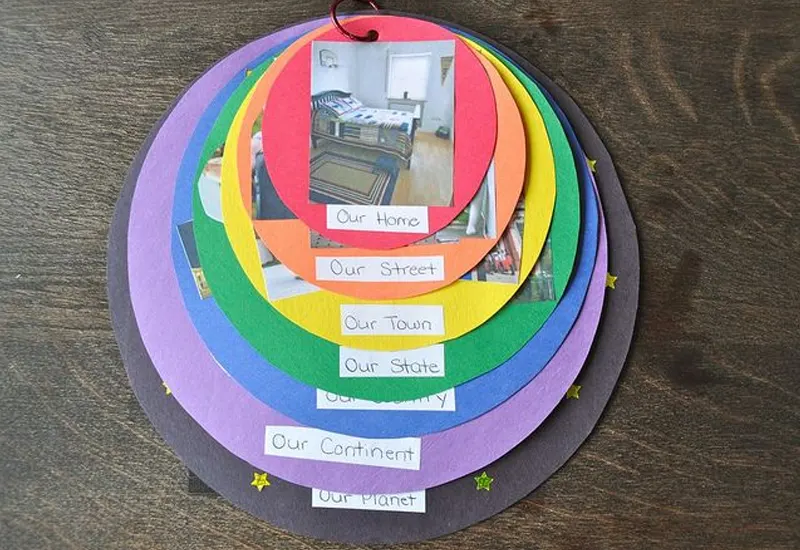
Matériel nécessaire :
- Printable circle templates or folded paper
- Crayons, glue
- Map or globe
- Child’s photo (optional)
Mesures:
- Introduce the concept of space/place using a globe or map.
- Let children complete each level: “My School,” “My City,” “My Country,” etc.
- They decorate each page or circle with drawings or stickers.
- Stack or staple pages together into a flipbook or tower.
- Display finished pieces under “Where We Live.”
Valeur éducative :
This activity promotes spatial thinking, community awareness, and global identity. It helps preschoolers contextualize their surroundings and recognize similarities and differences in others’ places of origin.
20. My Senses Exploration Station
This sensory-based activity lets preschoolers explore and express how they experience the world through their five senses. It’s a rich way to deepen self-awareness while supporting early science learning. Each child discovers what they like, dislike, or are curious about using real objects.

Matériel nécessaire :
- Five labeled bins or trays for touch, sight, sound, smell, and taste
- Items like fabric swatches, mirrors, bells, scented cotton balls, and fruit slices
- Hand sanitizer or wipes for hygiene
Mesures:
- Set up stations, each representing one of the five senses.
- Place related objects in each bin (e.g., lemon slices for taste, feathers for touch).
- Guide children through the stations one at a time.
- Encourage them to describe what they experience.
- Ask follow-up questions like “Which smell do you like best?”
Valeur éducative :
This activity nurtures observation and descriptive language, foundational to both science and literacy. It promotes mindfulness and helps children articulate preferences. Exploring the senses builds cognitive connections and increases awareness of the body’s capabilities, forming a bridge between physical and emotional identity.
21. My Favorite Things Sensory Bin
In this sensory-based activity, children fill a bin with small items that represent their favorite things. It encourages children to explore their senses while making personal choices. The experience is calming, reflective, and perfect for younger preschoolers who may not yet express themselves fluently with words.
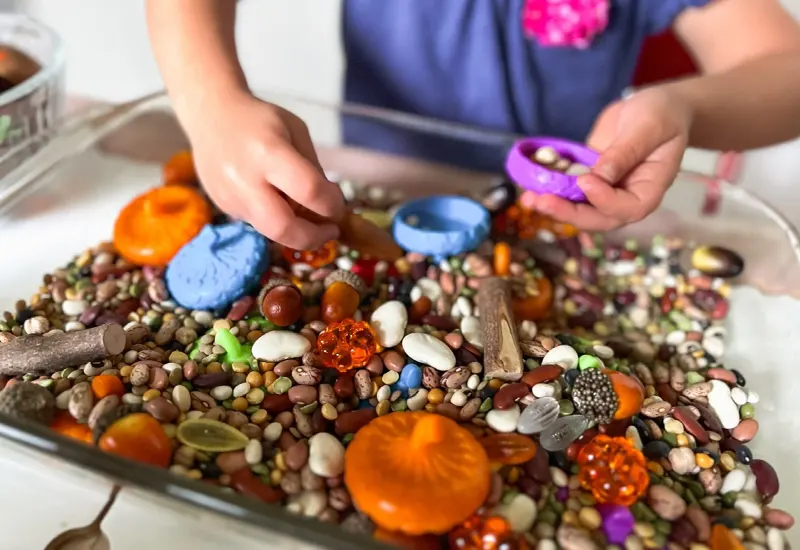
Matériel nécessaire :
- Small bins or containers
- Rice, beans, or shredded paper as filler
- Mini plastic animals, small toys, soft fabrics
- Scoops or tongs
Mesures:
- Provide a bin for each child or small group.
- Let children choose their favorite items to add to their bin.
- Allow time to explore the textures and talk about their selections.
- Invite them to present one favorite item to the class.
Valeur éducative :
This activity enhances sensory development, personal reflection, and language use. Children learn to make choices and describe their preferences. It supports emotional grounding through sensory play and strengthens communication as they explain their selections.
22. My Name Movement Game
This fun and energetic activity uses children’s names to create movement patterns. Each letter of the alphabet is assigned a different movement (e.g., A = jump, B = clap). Children spell out their name by performing the corresponding movements. It’s an excellent way to blend physical activity with early literacy.
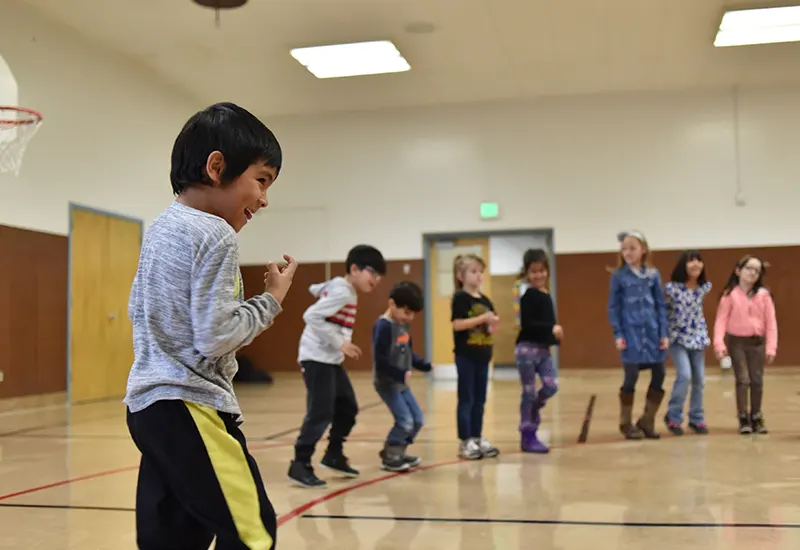
Matériel nécessaire :
- Alphabet movement chart
- Open space for movement
- Optional: name cards for reference
Mesures:
- Show the alphabet chart with assigned movements.
- Help each child spell out their name and identify the matching movements.
- Call out each letter and have the child perform the action.
- Let children take turns leading others in their names’ moves.
Valeur éducative :
This activity builds gross motor skills, letter recognition, and body awareness. It offers a kinesthetic learning experience that helps children internalize the spelling of their name while staying active. It also boosts self-esteem as their name becomes the center of a group activity.
23. When I Grow Up Dress-Up Day
Children explore their future aspirations by dressing up as what they want to be when they grow up. From firefighters to veterinarians, this activity encourages imagination and expression while offering insights into children’s interests. Sharing their costumes with peers builds social interaction and language skills.
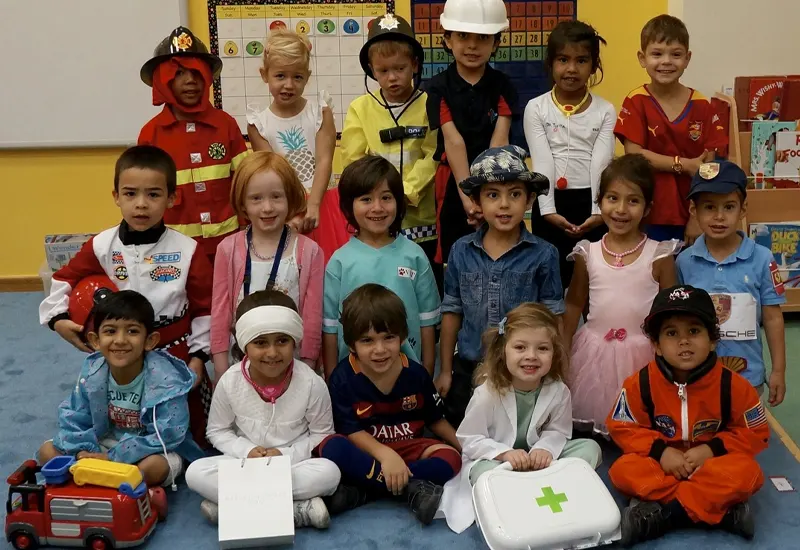
Matériel nécessaire :
- Dress-up clothes or props (doctor kits, hard hats, etc.)
- Mirrors
- Optional: a microphone for presentations
- Large paper to draw their future job
Mesures:
- Set up a variety of costumes and props.
- Let children choose one that represents their future self.
- Encourage them to describe their role to the group.
- Have them draw a picture of themselves in that job.
Valeur éducative :
This imaginative play supports social-emotional development, language expression, and future-thinking. Children practice public speaking and self-confidence while developing empathy by listening to others’ aspirations. It fosters curiosity about the world and various occupations.
24. My Friendship Web
Children create a friendship web using yarn, forming connections by tossing the yarn to classmates as they say each other’s names. This social-emotional activity helps build community and reinforces the idea that we are all connected.
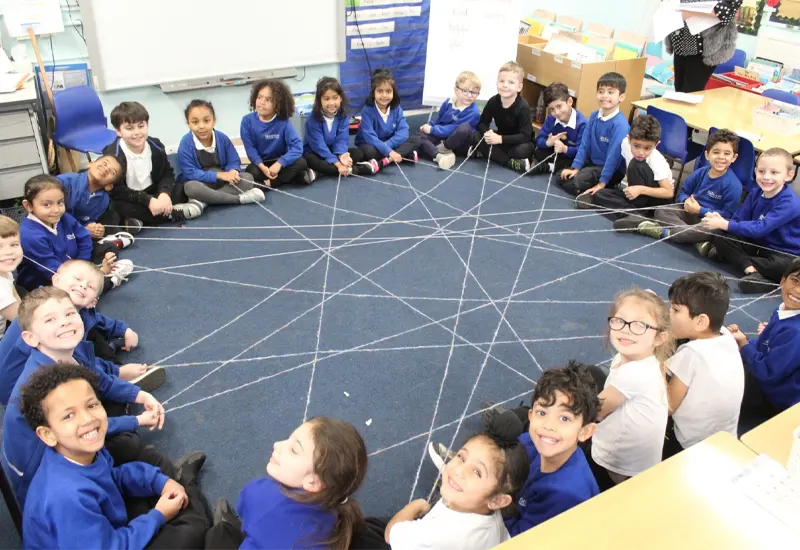
Matériel nécessaire :
- A large ball of yarn
- Open floor space
- Optional: name tags
Mesures:
- Gather the children in a circle.
- One child holds the yarn, says someone’s name, and tosses it to them.
- That child holds part of the yarn and tosses the rest to another friend.
- Continue until a web is formed, showing how everyone is connected.
Valeur éducative :
This activity fosters social bonding, name recognition, and a sense of community. Children learn to speak confidently, listen actively, and value relationships. It strengthens group identity and tangibly demonstrates inclusion and respect.
25. My Body Can Move Like This
In this lively activity, children explore how their bodies move by mimicking action prompts like hopping, spinning, crawling, or tiptoeing. They are encouraged to take turns choosing or inventing a new movement to lead the group. Movement becomes a fun tool for self-expression and awareness of physical capabilities. Children also gain confidence as they notice all the amazing things their bodies can do.
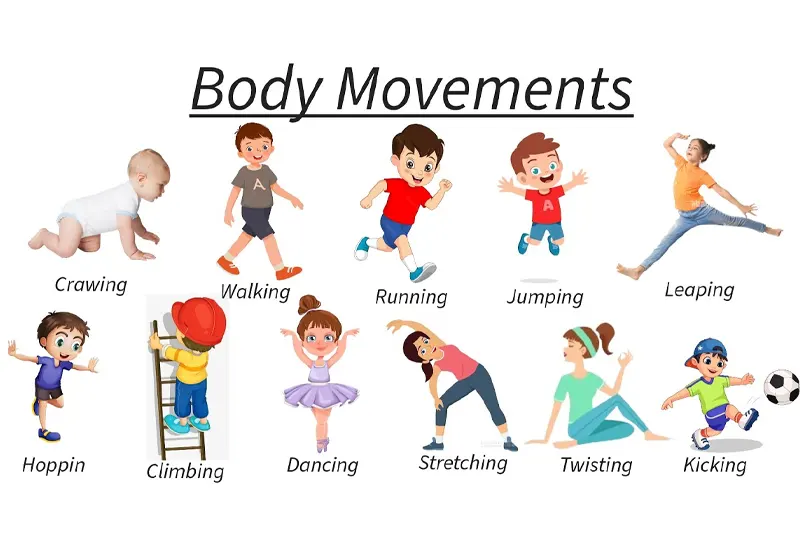
Matériel nécessaire :
- Action cards (jump, spin, stomp, etc.)
- Open an indoor or outdoor space
- Musique (facultatif)
Mesures:
- Show a movement card or act it out, and ask children to follow.
- Let each child take a turn choosing a movement to lead.
- Encourage imaginative actions: “Can your body slither like a snake?”
- Play upbeat music to enhance engagement and rhythm.
Valeur éducative :
This All About Me activity builds gross motor coordination, rhythm, and spatial awareness. It promotes self-esteem through active participation and peer leadership. Children also learn about body control, balance, and energy levels. Encouraging creative movement fosters both physical development and imaginative thinking.
26. My Name Hopscotch
This gross motor activity blends physical movement with literacy skills by having children jump across hopscotch squares labeled with the letters of their name. It’s a high-energy way for children to practice spelling, letter sequencing, and physical coordination. They gain pride in seeing their name stretched out across the floor and mastering the pattern through repetition.
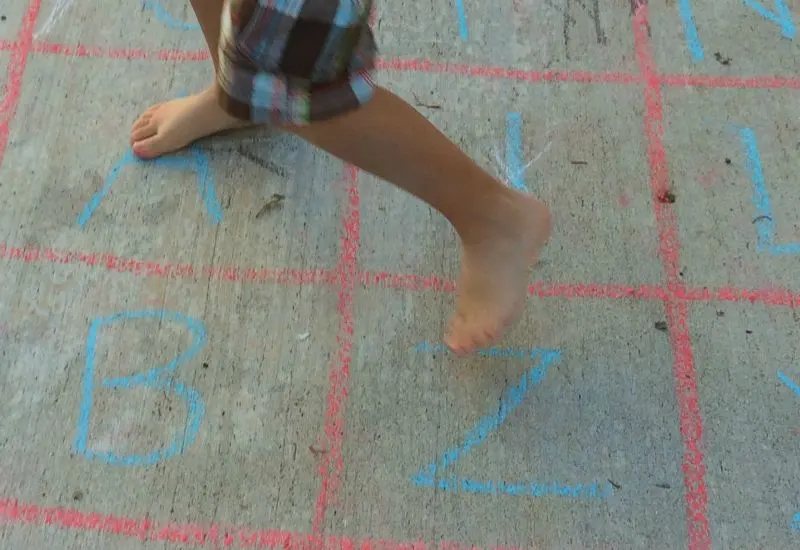
Matériel nécessaire :
- Sidewalk chalk (for outdoor play) or masking tape (for indoor)
- Letter cards or markers
- Espace ouvert
Mesures:
- Create a hopscotch grid and label each square with a letter from a child’s name.
- Let the child jump from letter to letter while spelling their name aloud.
- Repeat with different children and encourage cheering for each turn.
- For more challenge, mix the letters and ask them to put them in order.
Valeur éducative :
This All About Me activity supports letter recognition, phonemic awareness, and gross motor development. It also fosters confidence and body control as children jump with intention and focus. The repetition helps solidify spelling patterns, and the group dynamic builds peer encouragement and classroom bonding.
27. My Wish Jar
In this thoughtful reflection activity, children write or draw wishes for themselves—things they hope to do, learn, or become. These wishes are placed in a personal “wish jar” that they can revisit throughout the year. This inspires goal-setting and emotional expression while allowing a safe space for dreams. Teachers can use the wishes to help guide future learning opportunities.
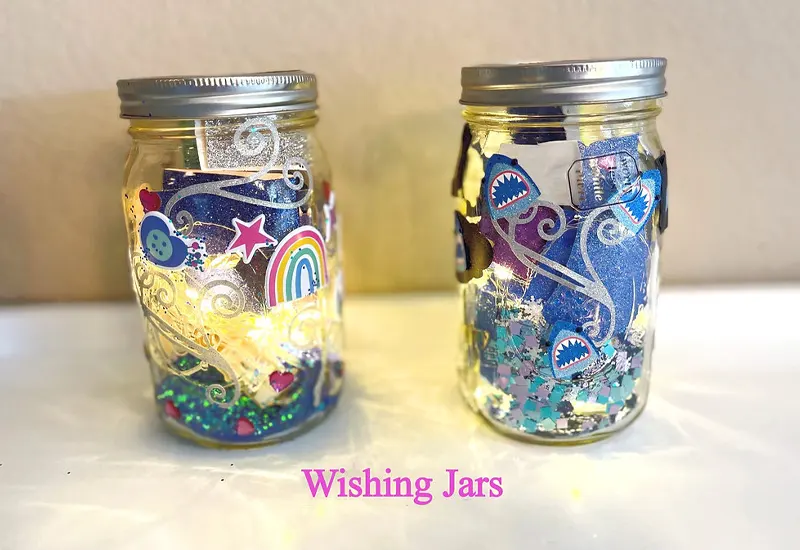
Matériel nécessaire :
- Small jars or envelopes
- Strips of paper
- Crayons ou crayons
- Optional: jar decorations (ribbons, stickers)
Mesures:
- Ask children: “What is something you wish for yourself?”
- Let them draw or write 2–3 personal wishes on separate slips of paper.
- Place the wishes in labeled jars or envelopes.
- Revisit the jars at the end of the year to reflect or add new wishes.
Valeur éducative :
This All About Me activity nurtures emotional growth, hope, and introspection. It helps children practice self-expression and introduces the concept of future-thinking. Creating wishes also reveals what is meaningful to each child, supporting differentiated learning and personal connection. Revisiting wishes promotes reflection and celebration of progress.
28. My Name in Nature
Children use natural materials—like leaves, twigs, pebbles, and flowers—to spell out their own names. This All About Me activity connects identity with the natural world and encourages hands-on exploration. Children develop an appreciation for nature while engaging in personal expression. It’s a calming and creative outdoor learning opportunity that celebrates who they are through the elements around them.
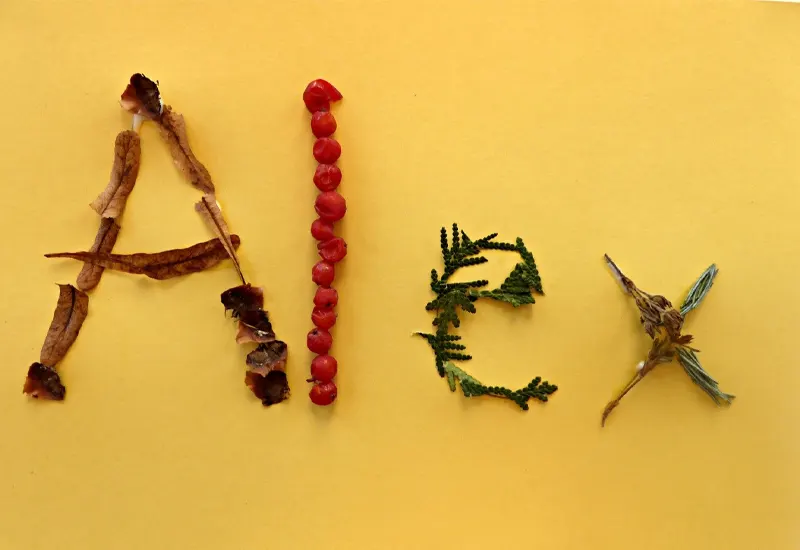
Matériel nécessaire :
- Basket for collecting natural materials
- Outdoor space or a large tray
- Name cards (as reference)
- Camera or tablet (optional for documentation)
Mesures:
- Take children outdoors to collect safe, natural items.
- Help them use the materials to spell out their names on the ground or tray.
- Provide name cards for spelling support.
- Photograph the finished work and allow children to share their creations.
Valeur éducative :
This preschool activity reinforces name recognition, spelling, and environmental awareness. It promotes fine motor development and supports letter formation in a sensory-rich context. Children strengthen their connection to their name and identity through tactile, nature-based creativity. It also builds focus, patience, and respect for materials.
29. My Future Poster
In this forward-thinking activity, children create a poster showing what they imagine they will be like when they grow up. They can include a picture of themselves in their future job, a house they dream of living in, or places they want to visit. It’s a chance to connect identity with aspiration, encouraging children to dream big and reflect on who they hope to become.
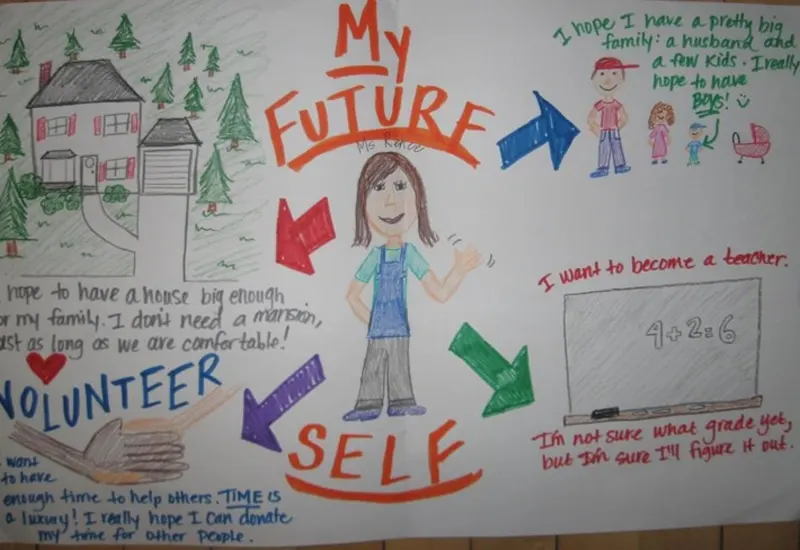
Matériel nécessaire :
- Poster paper
- Markers, crayons, glue
- Magazines for collage images
- Optional: mirrors or self-photos printouts
Mesures:
- Ask children to imagine themselves as grown-ups: “What do you look like? What do you do?”
- Let them draw or collage a poster that answers these questions.
- Label different parts of the poster (job, family, favorite things).
- Host a “Future Me Gallery Walk” for sharing.
Valeur éducative :
This All About Me activity encourages goal-setting, identity expansion, and creative thinking. Children gain language for their dreams and explore the idea of change and growth. It also offers insight for educators into children’s interests and longings, guiding future learning opportunities.
30. My Daily Favorites Wheel
Children create a spinning wheel that displays their favorite parts of the day, like lunch, circle time, playtime, or nap. This helps them reflect on their daily routine and identify what moments bring them joy. It’s a useful tool for promoting emotional regulation, classroom belonging, and positive association with structured time.
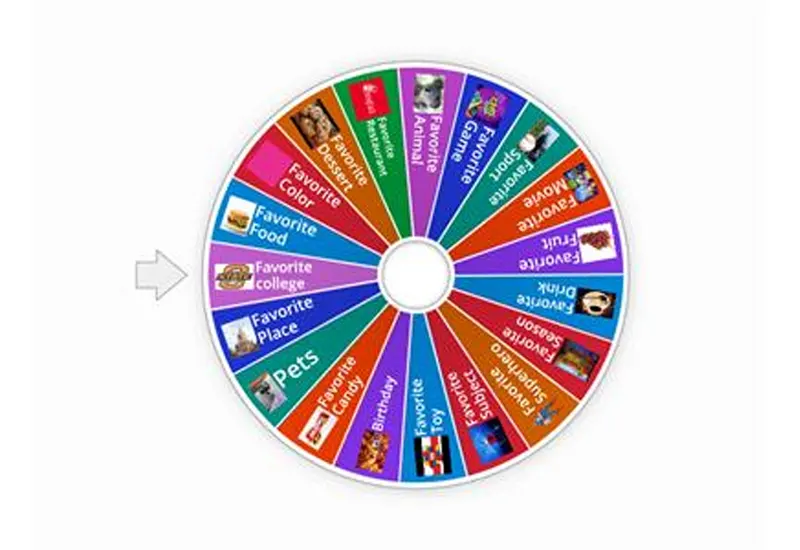
Matériel nécessaire :
- Paper plates or cardboard circles
- Markers and crayons
- Fasteners for the spinner
- Pictures or icons of classroom activities
Mesures:
- Divide the wheel into 4–6 segments (one for each part of the day).
- Help children draw or paste their favorite activity in each section.
- Attach a spinner in the center using a brass fastener.
- Let children spin and share their “happy time” during morning meetings.
Valeur éducative :
This All About Me activity builds time awareness, self-reflection, and communication skills. It helps children identify what parts of their daily life make them feel good, which supports emotional regulation. Teachers also gain insight into what activities engage each child most.
Envoyez-nous un message si vous avez des questions ou si vous souhaitez obtenir un devis. Nos experts vous répondront dans les 48 heures et vous aideront à sélectionner le produit qui vous convient.
Tips for Teachers and Parents: Making the Most of All About Me Preschool Activities
All About Me activities for preschoolers can be incredibly rewarding, but their success often depends on how they are introduced, guided, and followed up. Whether you’re a teacher planning a full unit or a parent looking for a meaningful connection at home, these tips will help ensure that the experience is inclusive, engaging, and developmentally appropriate.
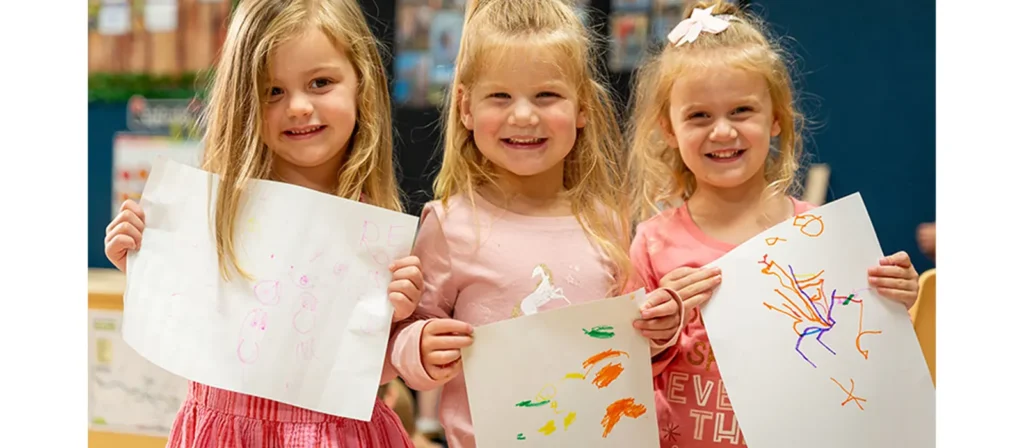
1. Embrace Every Child’s Uniqueness
Children come from a wide variety of backgrounds, experiences, and family structures. When doing All About Me activities, encourage open-ended responses and avoid assumptions. Celebrate each child’s individuality, whether it’s their language, culture, personality, or abilities. This fosters a strong sense of belonging and helps every child feel valued.
2. Keep It Child-Led and Play-Based
Allow children to take the lead in choosing how they express themselves through drawing, movement, storytelling, or construction. Avoid over-structuring activities. The most meaningful self-exploration happens when children are free to create, reflect, and share in their own way.
3. Use These All About Me Activities as Daily Check-Ins
Many All About Me activities double as great tools for daily emotional check-ins. For example, emotion wheels, personal journals, or name songs can become part of the morning routine. These small rituals help children regulate emotions and strengthen their voice in the classroom.
4. Extend All About Me Activities for Preschoolers into Home Life
Encourage parents to participate by sending home simple All About Me prompts (e.g., “Draw your favorite family meal” or “Interview a grandparent”). These home connections reinforce learning, affirm the importance of family culture, and provide teachers with deeper insight into each child.
5. Document and Display the Learning
Whether it’s a mural, timeline, or a collection of self-portraits, children love seeing their work on display. Create a dedicated “All About Us” space in your classroom or home. This not only boosts confidence but also encourages peer conversations, observation, and respect for each other’s differences.
6. Reflect and Revisit Throughout the Year
All About Me isn’t just for the beginning of the year. Revisit these themes regularly—children change rapidly, and so do their ideas about themselves. Repeating certain activities later in the year shows growth, promotes reflection, and deepens self-awareness over time.
7. Respect Emotional Boundaries
Some children may be shy or unsure about sharing personal information, especially if they’ve experienced change or trauma. Never force participation. Provide alternative, more private formats like journaling or drawing for children who prefer to express themselves more quietly.
8. Model Self-Expression and Sharing
Teachers and parents can model the activities too, sharing their own “All About Me” facts or making a poster about their family. When adults share in a simple, warm way, it sets a tone of trust and safety, encouraging children to open up.
9. Incorporate Diversity and Inclusion Naturally
When planning or facilitating All About Me activities, ensure that materials, prompts, and language reflect diverse identities, family types, and backgrounds. This includes books, visuals, and examples that children can relate to and feel seen in.
10. Celebrate Progress, Not Perfection
All About Me activities are not about artistic skill or “correct answers.” Focus on effort, expression, and connection. Celebrate what each child chooses to share and how they engage, rather than the final product.
Frequently Asked Questions: All About Me Activities for Preschoolers
- What are All About Me activities for preschoolers?
All About Me activities are hands-on, child-centered exercises that help preschoolers explore their identity, feelings, family, and preferences. They often include drawing, storytelling, music, or sensory play, and support both emotional and cognitive development. - When should I introduce All About Me activities in the preschool classroom?
The best time is during the first few weeks of school, but they can also be revisited during family units, identity-themed weeks, or when welcoming new students. They are especially effective as icebreakers or transition tools. - How can I adapt All About Me activities for younger preschoolers?
Use simple materials, clear visuals, and short tasks like name tracing, coloring, or photo-based matching. Keep instructions short and allow for hands-on, exploratory play rather than structured reflection. - Can these All About Me preschool activities be done at home with parents?
Absolutely. Many All About Me preschool activities are perfect for home, such as making a family tree, decorating a name banner, or creating a “My Favorites” collage. Involving families deepens the learning experience and builds school-home connections. - How can I make All About Me activities inclusive for children with diverse backgrounds?
Use open-ended prompts that allow for different types of families, languages, and cultures. Avoid making assumptions and allow children to represent themselves however they choose—through words, pictures, or symbols. - How do these All About Me preschool activities support school readiness?
They help build foundational skills like listening, speaking, following directions, and working independently. At the same time, children begin to develop a positive self-concept, which is critical for success in group learning environments. - What if a child doesn’t want to share about themselves?
Never force a child to participate verbally. Offer alternatives like drawing, using stickers, or one-on-one sharing with a teacher. The goal is to create a safe space where every child feels comfortable expressing themselves in their own way. - What themes are common in All About Me preschool activities?
Common themes include name recognition, body awareness, emotions, family, daily routines, likes/dislikes, and personal goals or dreams. These topics help build a holistic picture of the child.
Conclusion
All About Me activities are far more than just fun preschool projects—they’re foundational experiences that help young children understand who they are, where they come from, and how they relate to the world around them. Whether through art, storytelling, music, or movement, these All About Me preschool activities give every child a chance to be seen, heard, and celebrated.
By incorporating these 30 engaging ideas into your classroom or home routine, you’ll be nurturing not only early academic skills like language, math, and fine motor development but also fostering self-confidence, empathy, and emotional growth. Most importantly, you’re creating an environment where every child can proudly say: “This is me.”

